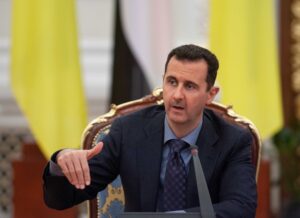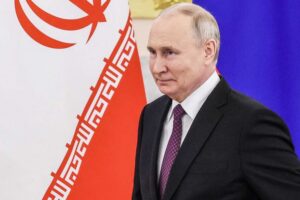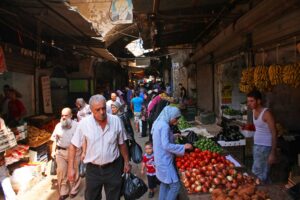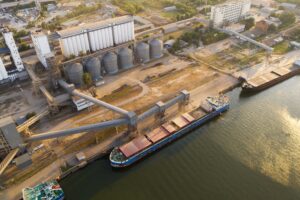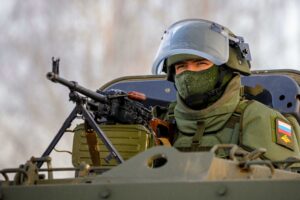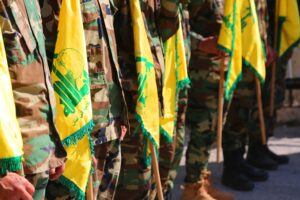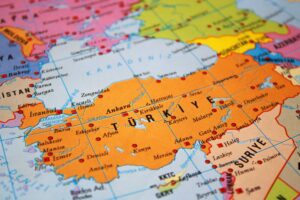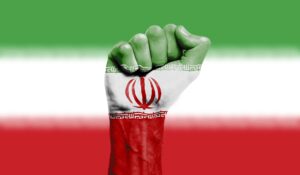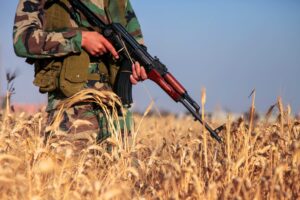Introduction
Since the very first days of anti-government agitation in Syria, predictions of the imminent fall[i] of President Bashar al-Assad have been widespread. Some of his most ardent critics and backers of rebels, such as David Cameron[ii] and Nicolas Sarkozy[iii], have left the international scene with the Syrian state still standing. Why has the Assad-led government survived while others in the region crumbled? At its core, the answer lies with Syria’s secular politics and its experienced armed forces. While weakened by nine years of civil war, the Syrian Arab Republic retained the necessary institutional foundations to wage a successful counterinsurgency whereas those pillars have completely collapsed in other countries in the wider region.
Advantageous Circumstances
Unlike the militaries of Iraq, Libya, and Yemen, the Syrian Arab Army has been a force to reckon with since the start of the Arab Spring. While it is true that it suffered serious losses early on in the war, it had years of experience that has only been sharpened as the civil war continued. Despite having reduced mandatory military service[iv] prior to the war, the military maintained much of its know-how, which can be traced back as far as its participation in the international coalition during the Gulf War as well as its prominent role in the Lebanese Civil War and Lebanon’s subsequent occupation until 2005. The latter proved to be particularly significant as it offered many lessons[v] to draw from, ranging from conducting urban warfare to balancing relationships between warring factions and militias.
Second, geography has proven to work in the government’s favor, thereby enabling the survival of the state. The relatively flat landscape in the south and center of Syria offer the military significant latitude with regard to mobility and supply routes—a position further reinforced by the Mediterranean to the west. The significance of this advantageous geography can perhaps be best seen when contrasted with the Ethiopian Civil War[vi] during the latter days of the Cold War. While both conflicts featured a large military backed by Moscow (both in the form of armaments and advisors) against a multitude of rebel forces, the geography differed massively. The Ethiopian military struggled most in the embattled province of Eritrea—made up mostly of highlands and encompassing even coastal areas vital for foreign resupply. As such, the Ethiopians were limited by their ability to move, use tanks and other armored vehicles, and effectively utilize artillery and air support. These issues are largely non-existent in the Syrian case with the notable exception of urban areas.
A Secular Island
Much has been made of the presence of Alawites, an ethnoreligious minority group that practices a form of Shia Islam, in key senior positions of Syrian government, including the presidency. Directly related to this is the alleged formation of a ‘Shia Crescent[vii]’ encompassing the Shi’ite majority states of Iran and Iraq along with Shi’ite-minority countries of Syria and Lebanon, such as when Secretary of State Mike Pompeo spoke about how Iran “built out the Shia crescent so they could travel, whether it was from Sanaa and Baghdad on to Damascus.” While some overlap and cooperation do exist between the governments and militias between Tehran and Beirut, it still ignores the fundamental fact that Syria is a secular state[viii], a rarity in its regional neighborhood. The cabinet has featured not only Alawites but also a wide cross-section of Syrian society. An especially inclusive position among state institutions has been that of the Minister of Defense. In the past decade and a half, the office has been held by an Alawite, a Sunni Arab[ix], an ethnic Turkman[x], as well as a Greek Orthodox[xi].
The preservation of secular policies is not simply theoretical but is implemented in practice as well. The secular state has characterized Syrian government for decades, and is fundamentally incompatible with Salafism, the vision held by many on the rebel side. As early as 2012, the Pentagon’s Defense Intelligence Agency circulated a now-declassified memo[xii] that confirmed that “The Salafist, the Muslim Brotherhood, and AQI [al-Qaeda in Iraq] are the major forces driving the insurgency in Syria.” This reality on the ground explains why the Syrian government—which had for years cooperated with Western governments like those of the United States and the United Kingdom—uses much of the same rhetoric as its international opponents by describing the conflict as a ‘war on terror.[xiii]’ By doing so, the government has been able to rally significant popular support from various minority groups as well as from moderate Sunnis who view foreign-backed Wahhabists as a fundamental threat to the fabric of Syrian society. In the 2018 Report[xiv] on International Religious Freedom on Syria, even the U.S. State Department recognized that “number of minority religious groups viewed the government as protecting them from violent Sunni extremists.” In the officially-secular country, with relatively socially liberal attitudes compared to the region as a whole, the largely Sunni Arab population continues to reject Salafism which is seen as a Gulf project and not an organic feature of society.
The viability of the Syrian state depends on the fact that the secular structure has deep roots. While typically seen as a one-man show, the government is in fact the product of a multi-party coalition known as the National Progressive Front[xv]. As its name suggests, it consists of a plethora of secular, left-leaning, and nationalist parties with names like the Arab Socialist Ba’ath Party, the Syrian Social Nationalist Party, Syrian Communist Party, etc., which have over the course of decades inculcated these features into the governance structures. With Nasserist influences and a leading party founded by a Christian, the Syrian state has time and again reaffirmed its secular and pan-Arabist roots, with President Assad having asserted his commitment to the country’s ‘Arab identity.’[xvi] In between 2003 and the outbreak of the Syrian Civil War, the country hosted well over a million Iraqi refugees—40% of whom were Christians, despite the fact that they represented only 5% of Iraq’s population[xvii]. The Syrian state, when contrasted to growing religious fundamentalism and sectarian violence seen in the region, has become the preferred option for many, particularly religious minorities.
Alliances Matter
The reality of the continued viability of the Syrian state has been increasingly acknowledged by its neighbors. Affectionate terminology has been used by countries in the region with the hope of currying favor with Damascus in a bid to anticipate what seems to be an ever more certain outcome. For example, when a border crossing was reopened in October 2018, a spokesman for Amman described the passage as ‘a vital lifeline for trade between the two brotherly countries Jordan and Syria.’[xviii] Similarly, Bahraini Foreign Minister Shaikh Khalid Bin Ahmad Al Khalifa described Syrians as ‘Arab brothers[xix]’ following a meeting with his Syrian counterpart.
Perhaps the best metric to measure the survival of the Syrian Arab Republic is by analyzing the attitude of the Arab countries with the largest militaries, namely Egypt and Algeria. In the case of the former, President Abdel Fattah el-Sisi openly stated[xx] his support for the Syrian government on Portuguese television back in 2016 after having already supported it unofficially. The Algerian leadership—which itself fought a bloody, decade-long civil war against Islamist fighters—went further by not only voicing its support for the Syrian state in ‘combating all forms of terrorism[xxi]’ but also by pledging to help with the post-war reconstruction of the country.
Conclusion
The original sin which triggered the outbreak of violence was the mistaken belief held by Washington, London, Riyadh, and others, that Assad would suffer the fate of Colonel Gaddafi and Saddam Hussein at the point of first contact. Rather than appreciating the unitary structure of Syria—as opposed to the tribal/regional support, as in the cases of Gaddafi and Saddam—foreign policymakers allowed themselves to be fooled by applying a non-applicable template. In analyzing the situation in the eastern Mediterranean and in strategizing for the future, the unique conditions that gave shape to the Syrian state should not give way for a simple narrative of it just being an Arab dictatorship.
[i] Hurriyet Daily News. (2012). “Premier vows to pray in Damascus mosque soon.” [Online] Hurriyet Daily News. Available at: https://www.hurriyetdailynews.com/premier-vows-to-pray-in-damascus-mosque-soon-29505.
[ii] Stone, J. (2015). “President Assad has no place in the future of Syria, David Cameron insists.” [Online] The Independent. Available at: https://www.independent.co.uk/news/uk/president-assad-has-no-place-in-the-future-of-syria-david-cameron-insists-a6681601.html
[iii] Rayner, G. (2011). “Syria: Nicolas Sarkozy demands Bashar al-Assad step down after ‘disgusting massacres’.” [Online] The Telegraph. Available at: https://www.telegraph.co.uk/news/worldnews/middleeast/syria/8989487/Syria-Nicolas-Sarkozy-demands-Bashar-al-Assad-step-down-after-disgusting-massacres.html
[iv] Xinhua. (2011). “President al-Assad forms new Syrian government.” [Online] China Daily. Available at: https://web.archive.org/web/20110503190742/http:/www.chinadaily.com.cn/xinhua/2011-03-20/content_2068776.html
[v] Abrahamsen, R. (2019). “Revisiting the securitization of migration: a study of the 2015–2016 ‘refugee crisis’.” Third World Quarterly, 40(8), 1438-1457. doi: 10.1080/03068374.2019.1567099.
[vi] Johnson, J. A. (2022). “The Ethiopian Civil War and the Failure of Counterinsurgency.” [Online] Small Wars Journal. Available at: https://smallwarsjournal.com/jrnl/art/ethiopian-civil-war-failure-counterinsurgency
[vii] The Economist. (2015). “The Shia crescendo.” [Online] The Economist. Available at: https://www.economist.com/middle-east-and-africa/2015/03/28/the-shia-crescendo
[viii] Reuters. (2015). “Assad says Syria should be secular.” [Online] Reuters. Available at: https://www.reuters.com/video/2015/11/23/assad-says-syria-should-be-secular?videoId=366424008
[ix] Chulov, M. (2015). “Assad’s Sunni Foot Soldiers in Syria.” [Online] Foreign Policy. Available at: https://foreignpolicy.com/2015/11/05/assads-sunni-foot-soldiers-syria/
[x] Pipes, D. (2002). “Assad’s Survival Game.” Middle East Intelligence Bulletin. [Online] Middle East Forum. Available at: https://www.meforum.org/meib/articles/0202_s1.htm
[xi] Zitun, Y. (2011). “Syria’s Assad replaces defense minister with army chief of staff.” [Online] Haaretz. Available at: https://www.haaretz.com/2011-08-08/ty-article/syrias-assad-replaces-defense-minister-with-army-chief-of-staff/0000017f-db7a-db22-a17f-fffb83510000
[xii] Judicial Watch. (n.d.). Judicial Watch v. Department of Defense and Department of State – DOD Release 2015-04-10. [PDF] Judicial Watch. Available at: https://www.judicialwatch.org/wp-content/uploads/2015/05/Pg.-291-Pgs.-287-293-JW-v-DOD-and-State-14-812-DOD-Release-2015-04-10-final-version11.pdf
[xiii] TASS. (2018). “Politics – TASS.” [Online] TASS. Available at: https://tass.com/politics/1027000
[xiv] U.S. Department of State. (2018). “2018 Report on International Religious Freedom – Syria.” [Online] U.S. Department of State. Available at: https://www.state.gov/reports/2018-report-on-international-religious-freedom/syria/
[xv] BBC News. (2012). “Syria crisis: Saudi Arabia’s ‘role in supporting rebels’.” [Online] BBC News. Available at: https://www.bbc.co.uk/news/world-middle-east-18582755
[xvi] Dov, L. (2018). “Sudan’s President Is First Arab Leader to Visit Assad Since War Began.” [Online] Haaretz. Available at: https://www.haaretz.com/middle-east-news/syria/2018-12-16/ty-article/sudans-president-first-arab-leader-to-visit-assad/0000017f-df00-db22-a17f-ffb1c7340000
[xvii] Centers for Disease Control and Prevention (CDC). (n.d.). “CDC – Immigrant and Refugee Health – Iraqi Refugees – Immigrant and Refugee Health.” [Online] Centers for Disease Control and Prevention (CDC). Available at: https://www.cdc.gov/immigrantrefugeehealth/profiles/iraqi/index.html
[xviii] Al Jazeera. (2018). “Jordan and Syria agree to reopen Naseeb border crossing.” [Online] Al Jazeera. Available at: https://www.aljazeera.com/news/2018/10/14/jordan-and-syria-agree-to-reopen-naseeb-border-crossing/
[xix] Toumi, H. (2018). “Bahrain: Arabs must take lead in Syria.” [Online] Gulf News. Available at: https://gulfnews.com/world/mena/bahrain-arabs-must-take-lead-in-syria-1.2284900
[xx] Ariel, B. (2016). “Egypt shifts to open support for Assad regime in Syrian civil war.” [Online] The Jerusalem Post. Available at: https://www.jpost.com/Middle-East/Egypt-shifts-to-open-support-for-Assad-regime-in-Syrian-civil-war-473693
[xxi] Syrian Arab News Agency (SANA). (2017). “Syrian Arab News Agency (SANA).” [Online] Syrian Arab News Agency (SANA). Available at: https://sana.sy/en/?p=117077


